Splatterhouse Game series is an old-school series that released its first game in 1988. The Splatterhouse series is based on the beat ’em up arcade games published and developed by Namco. Notably, the Splatterhouse series has five games, with two sequels to the original one, Splatterhouse 2 and Splatterhouse 3, a remake of Splatterhouse in 2010 for newer console versions, Playstation 3 and Xbox 360, Alongside a parody Splatterhouse: Wanpaku Graffiti for young audiences. Double dragon game with a significant emphasis on martial arts influenced the beat ’em up arcade games of that time.
Splatterhouse chose to take a different road, influenced by other genres such as American slasher films and horror film authors. The Splatterhouse game’s brutal nature was prominently emphasized by its marketing representatives. On the front of the cover of Spllaterhouse games was a fictitious parental advice notice: “The horrifying theme of this game may be inappropriate for young children… and cowards.”.
There’s no arguing that when Splatterhouse was released in 1988, it was subsequently the most distinctive game ever made. It borrowed heavily influenced from a popular film genre and successfully applied it to gaming for the first time.
Everything about this game was unique and distinctive, and it could actually be unsuitable for cowards to play. This article will look deep down at the history of this game and everything that made it so unique and original.
History of Splatterhouse Game Series
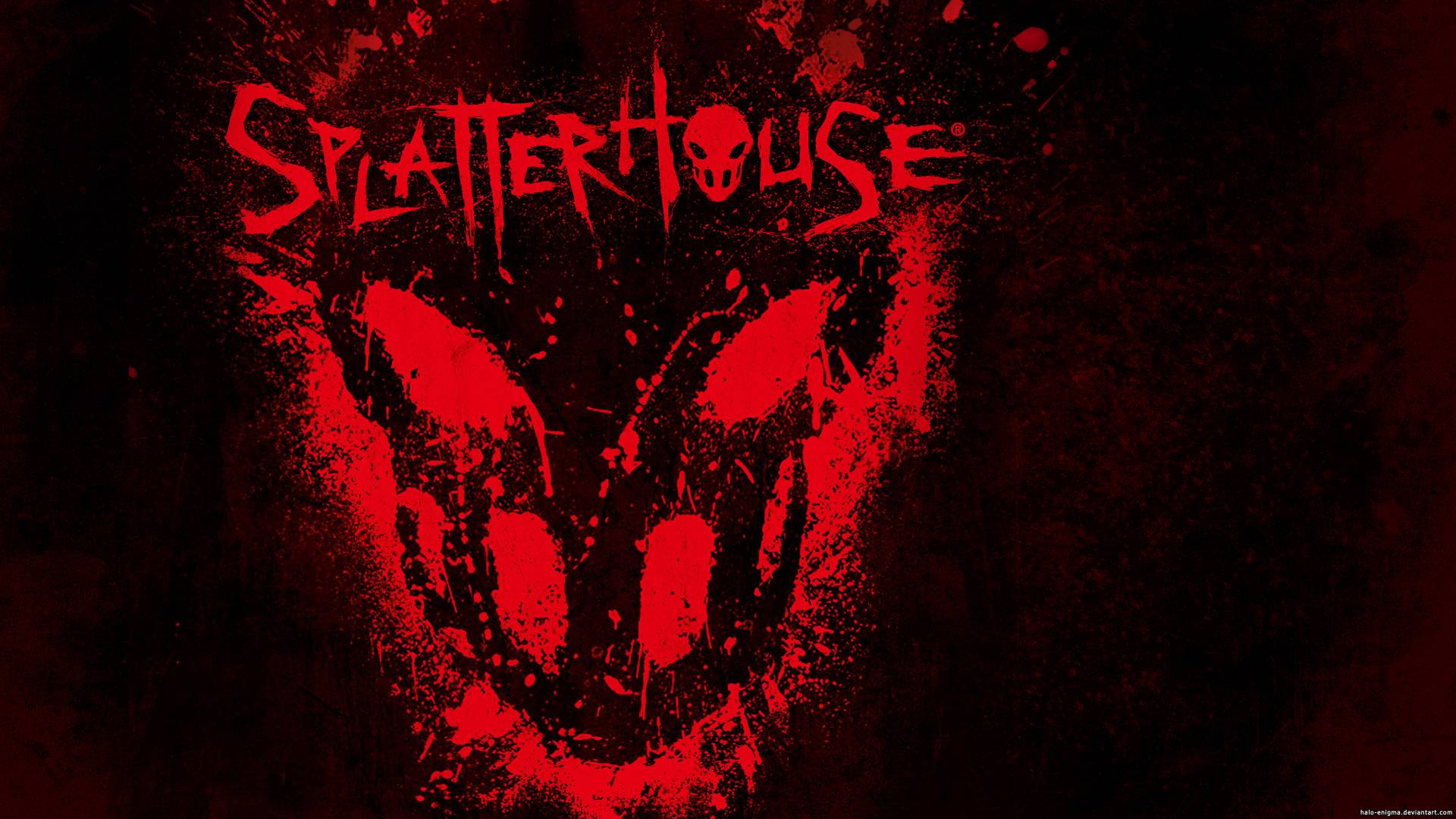
The year is 1988, and the beat ’em up arcade genre is still in its infancy, with most of the heavy hitters of this genre still to be launched, yet arcade gaming was still a significant industry. Namco’s rival at that time, Taito corporation, published techno’s Double Dragon in 1987. Namco had to develop a similar game to regain its market share in the gaming industry.
The following year, Namco published their arcade beat ’em up arcade game, Splatterhouse, with Kazumi Mizuno, to give an illustration series’ leading planner, stating that the Splatterhouse game series objective was to create real horror games.
He was already aware of the classic western arcade game Death Race, game’s main goal was to run as many people over as possible with your automobile to score maximum points. Death Race sparked a lot of controversy in the United States in 1976 because of the game’s content, which involved killing people that were not suitable for children.
Many newspapers criticized this game at that time for promoting virtual violence. Mizuno saw that violence became more prominent in television shows and movies in the late 1980s, so he sought to integrate it into video games.
Mizuno was enraged at the criticism he was receiving when horror and violence in other genres were considered acceptable, but it was met with outrage when it showed in his game. Mizuno had a big vision for the Splatterhouse game series, but according to Haya Paya, Splatterhouse’s assistant planner, a concept for such a game was against Namco’s company policy.
Therefore, the horror genre was deemed taboo in the gaming business. Mizuno and his crew experienced a lot of opposition at first. There was constant negotiation between Mizuno and Namco’s higher-ups during the early development phase of the Splatterhouse game series. According to Mizuno, Nimco’s censor board requested that blood shown in the game should be changed from red to green.
Indeed, zombies and other creatures in Splatterhouse were pretty realistic, but Namco’s management told them, “If your game is going to be about killing, killing, killing, you can’t make it real. As a result, blood had to be changed to a fluorescent green color, and zombies had to take on a more extraterrestrial appearance.
Haya Paya, co-planner of the Splatterhouse game series, says his job on this project was relatively straightforward because of Splatterhouse’s clear idea and vision, which brings together many horror and splatter aspects. However, many original concepts were eventually removed from this game due to ideological differences.
First Game of The Splatterhouse Game Series
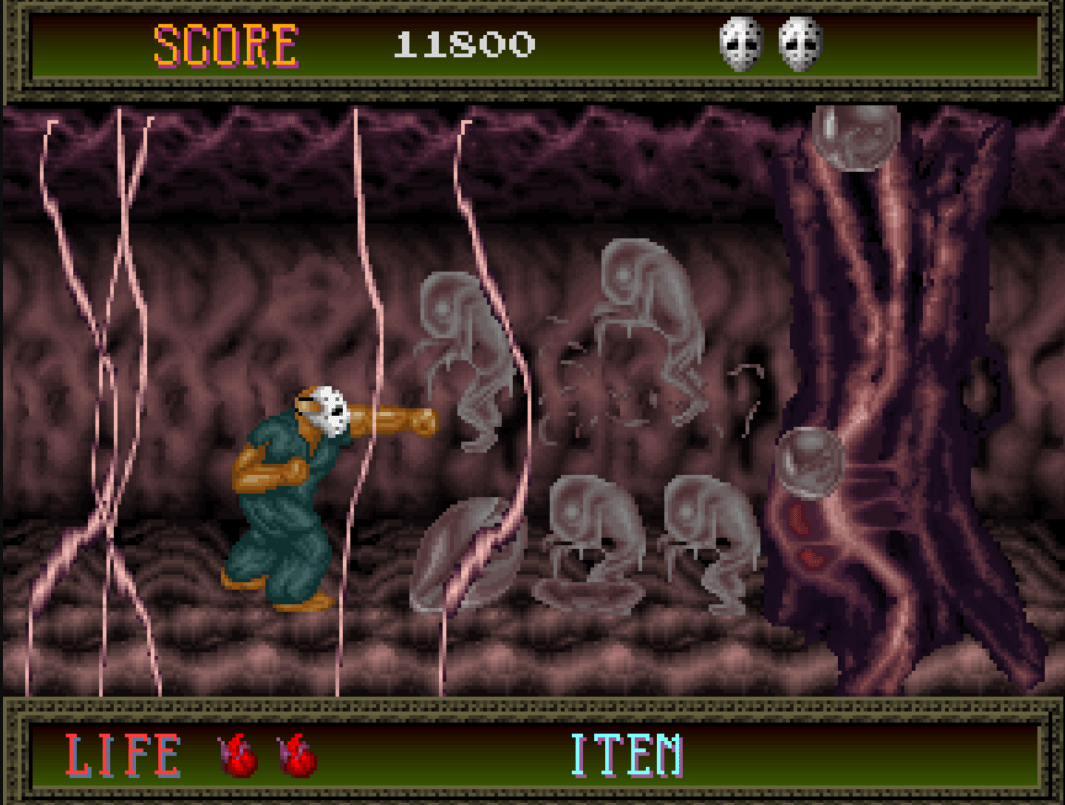
After a lot of back and forth during development, the first game of the Splatterhouse game series was successfully released in Japanese arcades in November of 1988. According to Mizuno, the game took 14 months to develop, with delays owing to numerous revisions that the management of Nimco demanded.
Players control Rick, a parapsychology student confined within the grounds of a mansion, in this side-scrolling beat ’em up with horror elements. Rick must battle swarms of creatures to save Jennifer, his love. According to the game’s storyline, Rick and Jennifer had found shelter in the west mansion during a storm.
Rumors around this building are that evil creatures are living there, nicknamed Splatterhouse by townspeople, of a horrible experiment reportedly done there by Dr. West. As they enter this mansion, the front door slams behind them, and scene closes in with Jennifer screaming. Strikingly terror master gives Rick a Mayan sacrificial relic from the West’s house with sentient powers before the game finally begins.
Rick is resurrected when the terror mask fuses with his body and transforms him into a monster-killing super being with tremendous force. This game’s player will immediately recognize several western horror film inspirations, such as Friday the 13th and the Evil Dead, in this game’s playthrough.
Regarding these themes, Mizuno was delighted that Splatterhouse game’s players understood references to these films that were incorporated into this game during location testing, giving players the impression that they were highly intelligent or game geeks, spotting these references and getting a clear sense of the game that they had intended.
Delving into the relationship between horror films and Splatterhouse games is vital. Mizuno also mentions that some of his favorite movie scenes include Friday the 13th: the final chapter when Jason runs for the first time and the ending location of Carrie’s final stage, which he considers to have the most mind-blowing plot twist.
The Gameplay And Plot
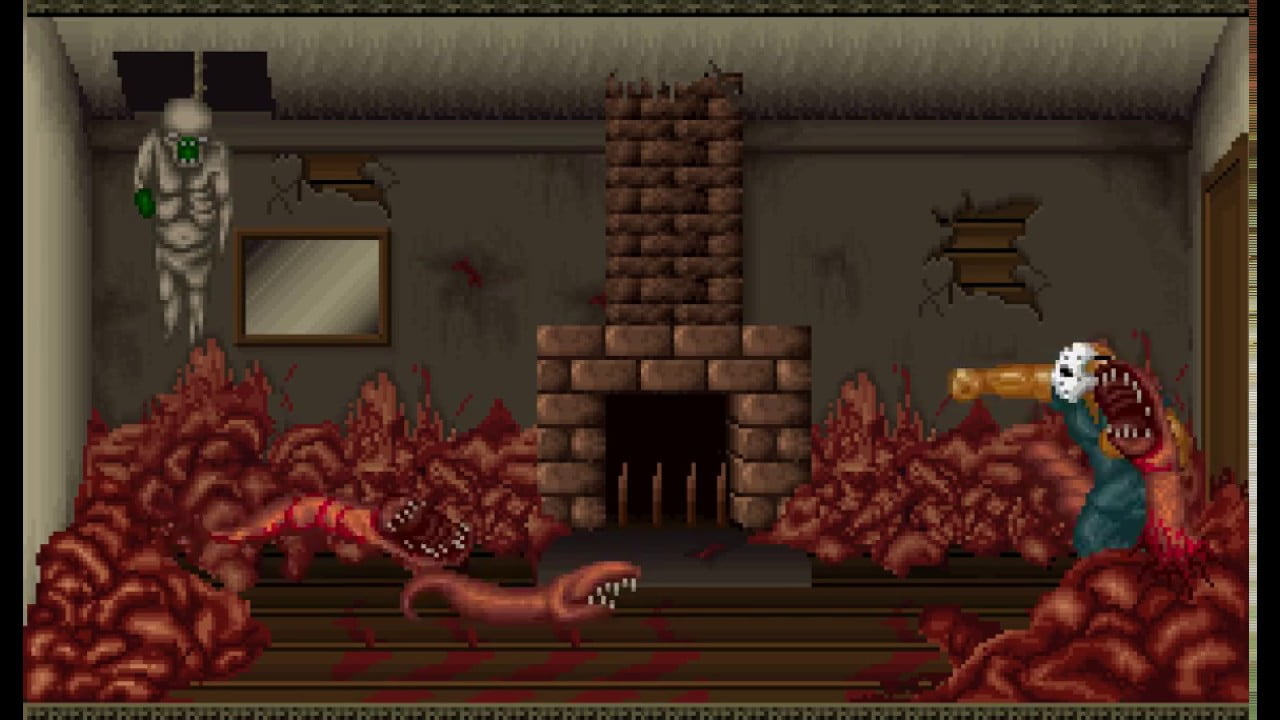
Rick can walk around in a two-dimensional environment, jump, and deliver punches and kicks with the first Splatterhouse gameplay. Rick has a variety of special moves, including the ability to dropkick and, most importantly, use numerous weapons throughout the game’s stages.
One of the most exciting aspects of this game’s weaponry is that they allow players to decapitate the enemy’s head from their body, resulting in the gratifying sound of green spurts firing out from his body into thin air. According to Yoshinori Kawamoto, this sound effect was added following the talk with Mizuno, one of the game’s sound composers.
Another feature that distinguishes the Splatterhouse game from the competition of that era is its level design. All levels follow the same idea of walking left to right to complete them, with certain levels featuring auto-scrolling. The Splatterhouse game’s major innovation in this domain was incorporating different pathways players had to confront if they fell down a hole or went up a ladder.
As the story of this game progresses, the game’s branching gameplay becomes increasingly evident, as each boss encounter has different objectives and techniques.
If a player dies in one of these earlier beat ’em up arcade games, they cannot simply respawn by inserting another coin; instead, they are thrown back to the beginning of the last checkpoint, making the game more challenging and implying that no one can pay to win in this game; instead, players must be better at this game and develop an element of skill to beat Splatterhouse.
Alongside that, the soundtrack and backdrop of the game and general level design contribute to the game’s timbre and give Splatterhouse a consistent feel throughout the playthrough. Nevertheless, bones and corpses scattered across the initial basement area and the dead bodies behind bars that emerge in the backdrop throughout the game’s early stages are details scattered throughout the Splatterhouse.
Monster spikes and bats serve as obstacles, which are both entertaining to pop or splatter on the walls. Several instances in the game will make players uneasy, such as trudging through a flooded stream where creatures constantly pop up from the mysterious depths.
Most importantly action of the game is not just limited to the mansion’s walls but also to the property’s more expansive grounds, which include splattering foes in frightening woods with creatures and monsters hanged from trees. There are several fascinating stages in the game, such as tense and suspenseful auto-scrolling portions with mirrors looming in the backdrop where Rick’s doppelgangers destroy mirrors randomly, forcing Rick to combat his reflections.
Above all, the game has a terrific ambiance throughout, with the environment becoming increasingly dark and ferocious as players proceed. Subsequently, stages and boss fights differ, making the game increasingly challenging while maintaining a balance of challenge and enjoyment. In the same vein game’s most terrifying sequence happens when Rick finally locates Jennifer, although this scenario has a story twist inspired by Mizuno’s experiences watching and writing horror films.
In this scene, Jennifer transforms into a slightly taller fanged creature, attempting to murder Rick while simultaneously pleading for aid. As Rick is forced to kill Jennifer, this phase of the game is unlike anything else in the arcade game’s history.
According to Mizuno, players murders damsel in distress in this game. During their struggle with Jennifer, she briefly regains consciousness and reverts to her original human form, begging Rick for aid. He also stated that he intended to incorporate more history but not enough room. According to Heya, before the debut of Splatterhouse, conventional popular games would have you save Miguel and his love Jennifer and move on to a nice ending in which everyone lives happily ever after.
Still, they didn’t want to do that. This inversion of audience expectations contributes to the game’s enduring popularity. Jennifer praises Rick for stopping her before she dies, which changes the game’s premise from helping a damsel in distress to a revenge scenario.
Strikingly the enraged Rick enters the West mansion; he follows the remaining monsters to a massive bleeding hole in the floor. Rick finds out that the mansion is alive. Rick travels down a gory hallway to the mansion’s womb, where fetus-like creatures confront him. As players proceed through the stage, the game advances to grow increasingly unpleasant until they reach the end.
Rick destroys the womb, forcing the mansion to explode into flames as it dies slowly. Rick attempts to flee from the burning mansion grounds in the game’s last stage while agonizing enemies entirely consumed in fire make one more try to destroy our mask-wearing hero.
Rick tosses the terror mask into a grave in the game’s ending stage, raising a massive creature named Hell Chaos that claws its way up from the soil and seeks to murder Rick. This boss fight is the final stage that players must complete; however, defeating him brings the Splatterhouse game to an end.
As Ricks staggers away from the West Mansion blazing in the distance, tremendously mournful music plays in the background. The game may be completed, but Rick’s ordeal is far from over, as evidenced by the last view of the fear mask smirking evilly with the word “end” appearing in the bottom right corner.
Home Release of Splatterhouse
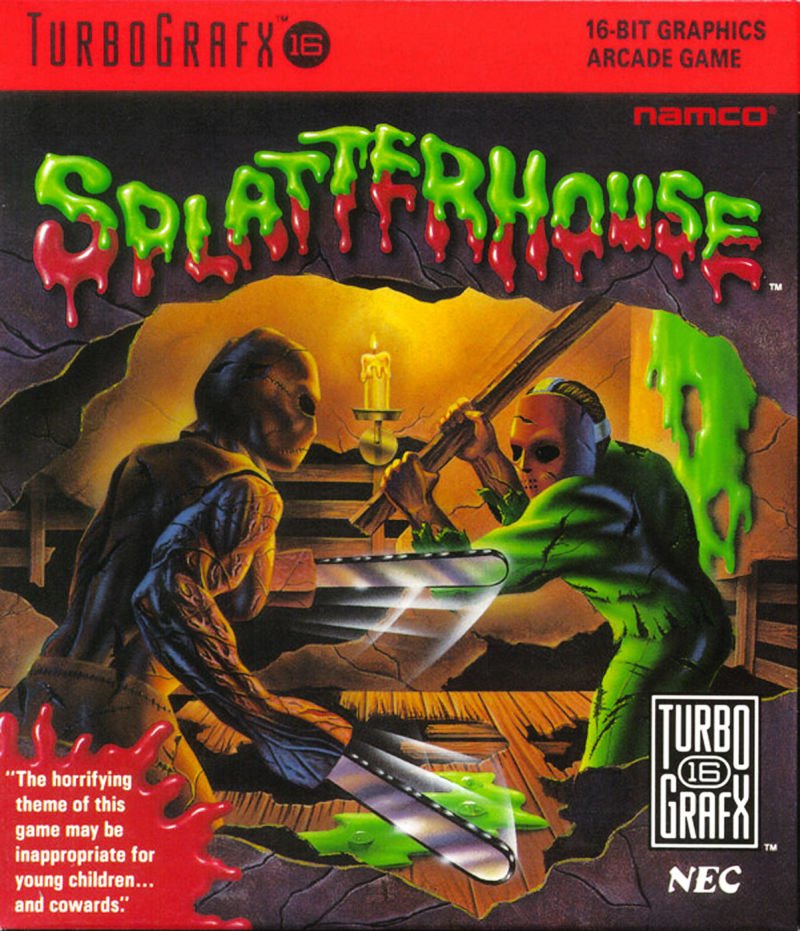
There’s no doubting that when Splatterhouse was released in 1988, it was one of the most popular games. A home version was nearly inevitable for most arcade games, but there was one major hindrance. The game’s themes were incompatible with Nintendo’s 8-bit technology, the world’s most popular gaming platform. Depending on where you were in the world, the Nintendo Famicom or Nintendo entertainment system was advertised as a family-friendly device.
On the other hand, the Splatterhouse game’s numerous adult themes were inappropriate for the system. The platform’s graphical limitations would have constrained Namco’s ability to convey Splatterhouse’s plot on the hardware. This isn’t to say Namco couldn’t earn money from the brand on hardware, but they decided to release Splatterhouse: Wanpaku Graffiti instead.
A Japanese exclusive takes a comedic approach to the presentation of parody and horror films, which we may look at further in the future. In terms of actual Splatterhouse game conversions, they first appeared on Japan’s second most popular home console at that time, the PC Engine, which was a graphically superior system to its competitors.
For starters, modifications were made to bring this game home. The game’s tale was laid out in the console’s game paper manual instead of on the opening screen. The use of an essential wooden stick instead of a meat cleaver in the film’s early moments was censored. The level of violence has also been reduced, making things look less gruesome.
There is also a crawling hand in stage five on the arcade game that flashes a middle finger. However, this is not included in the PC engine version. The game’s finale was also changed to make it less gloomy and depressing, with the terror mask bursting and an image of West’s mansion burning as the credits played.
Interestingly, when the console version was released in America on the Turbo Graphic 16, the tale was portrayed in the form of comic-book-style commercial advertising the game that appeared in various locations, including Fantastic Four issue 346.
In terms of the game itself, even more, adjustments were made for this regional variation, such as the white hockey mask being replaced with a red one to prevent Rick from appearing like Jason Voorhees in fear of a United States lawsuit.
Subsequently, the cathedral archers were also removed from stage four to reduce religious overtones. The final boss downgraded the inverted cross boss from a wooden cross to a standard tombstone. Namco didn’t want any signs of Christianity in the game.
Intriguingly, the game would later emerge on a system even more obscure than the Turbo Graphic 16, as an FM Town version produced in 1992, allowing the game to be played on the Fm Town console. The FM Town gave players an ultimate option to enjoy this game at home in that era with this version for the 32-bit system, which is even closer to the arcade game than its pc engine equivalent.
Splatterhouse: Wanpaku Graffiti
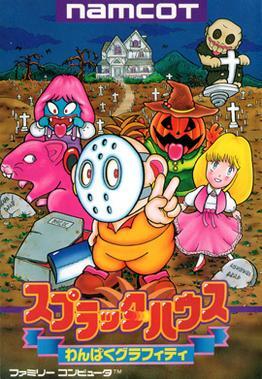
Splatterhouse: Wanpaku Graffiti is, without a doubt, the most light-hearted game as compared to others in the series. It is more of a parody of these original games than part of the same plot. The Splatterhouse universe continues to exist. Jennifer, still alive, is sobbing next to a grave when lightning hits, and Rick emerges from the grave.
All of this joy ends when lightning strikes Rick’s tomb on the left side, resurrecting a pumpkin that rapidly abducts Jennifer. The game is similar to other early 8-bit computer games and plays well. Likewise, the game isn’t innovative, but it’s still a lot of fun to play, even if it doesn’t look or play just like the original.
This game contains a lot of humor and foolish as hell bosses, charming horrible people, and an overall appeal that would work well in a Tim Burton film. One of the most excellent features of this game is that it has a sort of XP system going on.
As you play the game and kill the bad guys, the little number appearing in the top right corner increases, and when it reaches the target number, you get a little extra segment of life.
This feature is uncommon in early games like this, but it is appreciated. This game is a parody of the series, and after you fight the huge pumpkin head, Jennifer is saved, and it was all a movie.
Ricks had to enter the Splatterhouse for real this time, and unfortunately, this was the series’ last game like this. The younger audience received this tiny spinoff well, and as you can imagine, the next game returns to the original tale from the arcade.
Splatterhouse 2
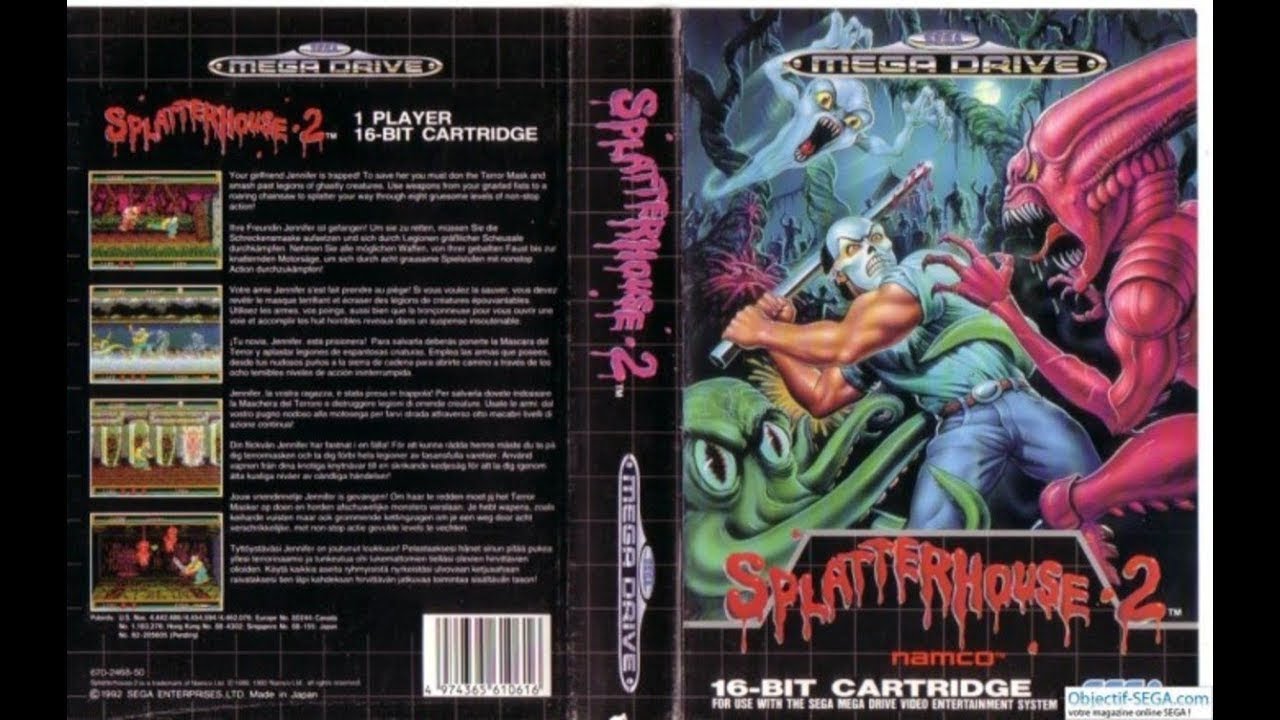
Splatterhouse 2 picks up three months after the first game, with Rick having left the West mansion where his girlfriend Jennifer was murdered. Rick is tormented by remorse and dreams of Jennifer’s cries and the mask’s diabolical temptations.
Certainly, the game starts with a grand opening with superb graphics and a scary soundtrack, in which the terror mask tells Rick that she doesn’t have to die and that we can save her. It’s frightening, and the game that terrified youngsters at that time was incredibly risqué.
Surprisingly, the mask is also different in this version. The Japanese game has a more Asian appearance, and the American and European versions have a much more grinning demon appearance. If you’re ready for a challenge, buy the Japanese version, which starts the game with fewer hearts and gives you fewer opportunities to continue.
Go for the American and European versions if you want a more entertaining and better-looking Splatterhouse game. In any case, Splatterhouse 2 will be a blast to play.
This game is acknowledged as the most fantastic game in the series, which may seem downhill, but the rest of the games are delightful too, but we’ll get to those later.
Splatterhouse 2 appears to be a remake of sorts, with its box noting that it begins again. Yet, it feels significantly more fluid this time and has a greater emphasis on platforming time rather than murder. This time around, the foes are a little more varied, and there are some incredibly magnificent bosses, as you’ve come to expect from this series.
Horrendously, the game is stunning. Rick has returned to the West mansion, but it is unclear how considering it was burned to ashes at the end of the previous game.
While playing the game, tiny pieces of text are displayed on the screen to bring you up to speed on the tale, which is relatively brief. Rick ultimately creates a gateway with his mask and encounters the ghost of his murdered girlfriend, Jennifer, who begs for help before being taken back to hell. After defeating another boss, Rick follows her inside the portal, accompanied by more fantastic music.
Rick meets Jennifer after defeating the boss. Rick saves Jennifer from a dark fried octopus before facing the final enemy for the second time with fantastic pumpkin 16-bit theme music.
Jennifer is rescued from her tormenting afterlife as the West mansion sinks under the lake once more. The closing titles begin to roll, proclaiming, “But what about the mask?” As long as that mask is around, it may happen again, and, like all good horror films that don’t know when to quit, we eventually get Splatterhouse 3. The game does an excellent job of laying the stage for the next step.
Splatterhouse 3
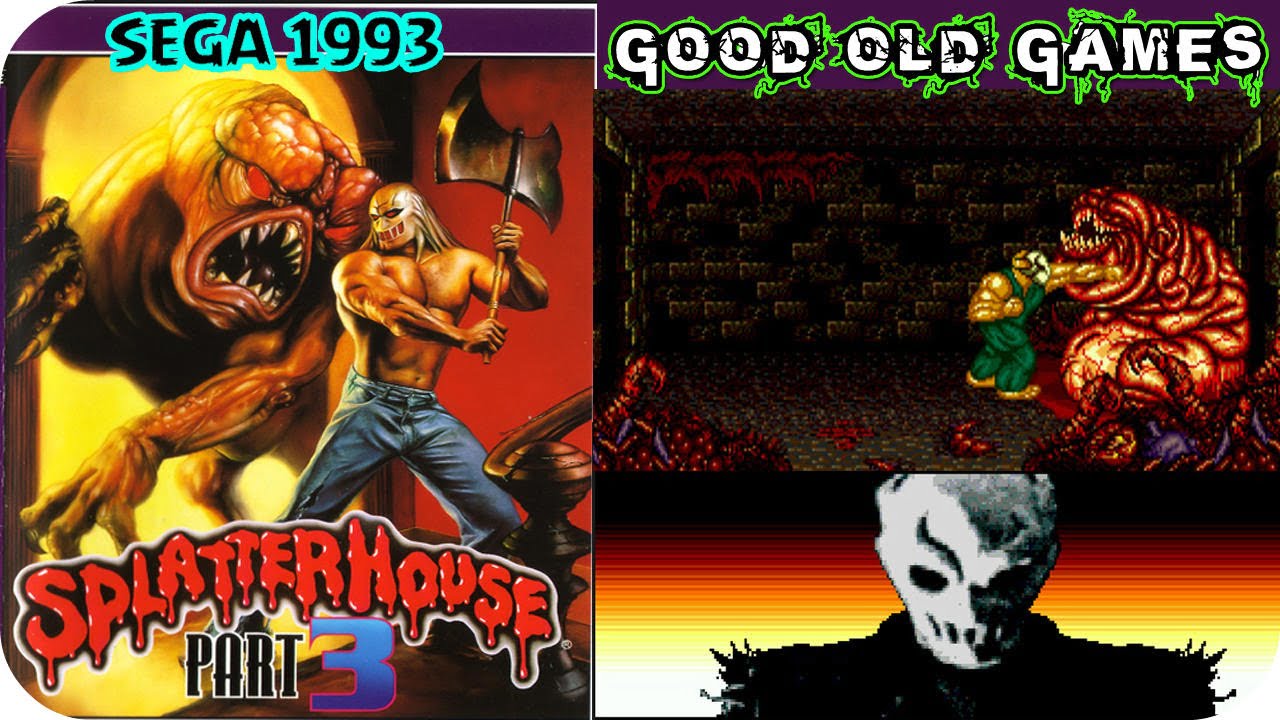
Splatterhouse 3’s graphic design differs slightly from the previous games, a welcome addition to the franchise. This game offers a much more street of fury golden ax kind of gameplay. The series provided 3D mobility for the first time, allowing you to walk up and down with the reduced sprite to view more of the playing field, but it didn’t end there.
As a result, the players may explore the West mansion at their own time and in whichever way they see fit, which adds to the game’s tremendous replayability as you try to figure out the best approach. Splatterhouse 3 was not well-known, and many people were unaware of it because it was never released in the United Kingdom.
Rick and Jennifer are now married, some years after the events of Splatterhouse 2, and Rick is a wealthy businessman. They also have a child. Rick lives happily with his new family and a solid income. Rick and Jennifer decided to purchase a large mansion in their extraordinary wisdom.
Rick puts on the mask one more time to combat creatures who have invaded his mansion, the new Splatterhouse, and the mask speaks to him once again. The game begins with the player rescue Jennifer early on, only to discover that it was all a deception to distract while the evils captured his son. Rick saves him in the end, and the terrible fear mask is ultimately destroyed. It’s a bizarre twist from an already strange game, especially because this particular story method is all too common in the horror films it’s imitating.
That is to say. The game is a welcome diversion from the franchise. This game is better because it has four distinct endings, making it more replayable. There is an ending where Rick cannot save both Jennifer and David. Rick stands alone with the weight of failure hanging heavily upon him, with the final words being “alone. All alone…” if you save Jennifer but not David, the game explains that he is now just a memory.
You have Jennifer asking you where’s David. If that is not chilling enough for you, if you do save David but not Jennifer, the game tells you that she is merely a memory to Rick and David and even has this stabbing end sequence where the young boy asks Rick, “Daddy, where is Mommy?”.
Despite this, the final ending, in which Rick rescues both of them and the terror mask is eventually destroyed, completes the series’ perfect conclusion as the sky becomes blue and Rick returns to his family. However, the terror mask is destroyed regardless of whatever ending you pick, completing the series’ perfect conclusion.
Suppose you’ve played the game since its beginnings in the arcade, depending on how well you play. In that case, you may experience thoroughly mixed emotions of happiness or even regret as the character you’ve controlled and felt sorry for up to this point with his struggle to free his girlfriend and, eventually, his son.
Your ending is determined purely by your skill in playing these games. The trilogy of games has a fantastic finish that wraps off the tale with the ideal horror decorated undoubtedly the finest horror trilogy of all time.
Splatterhouse Reboot – What Happened?
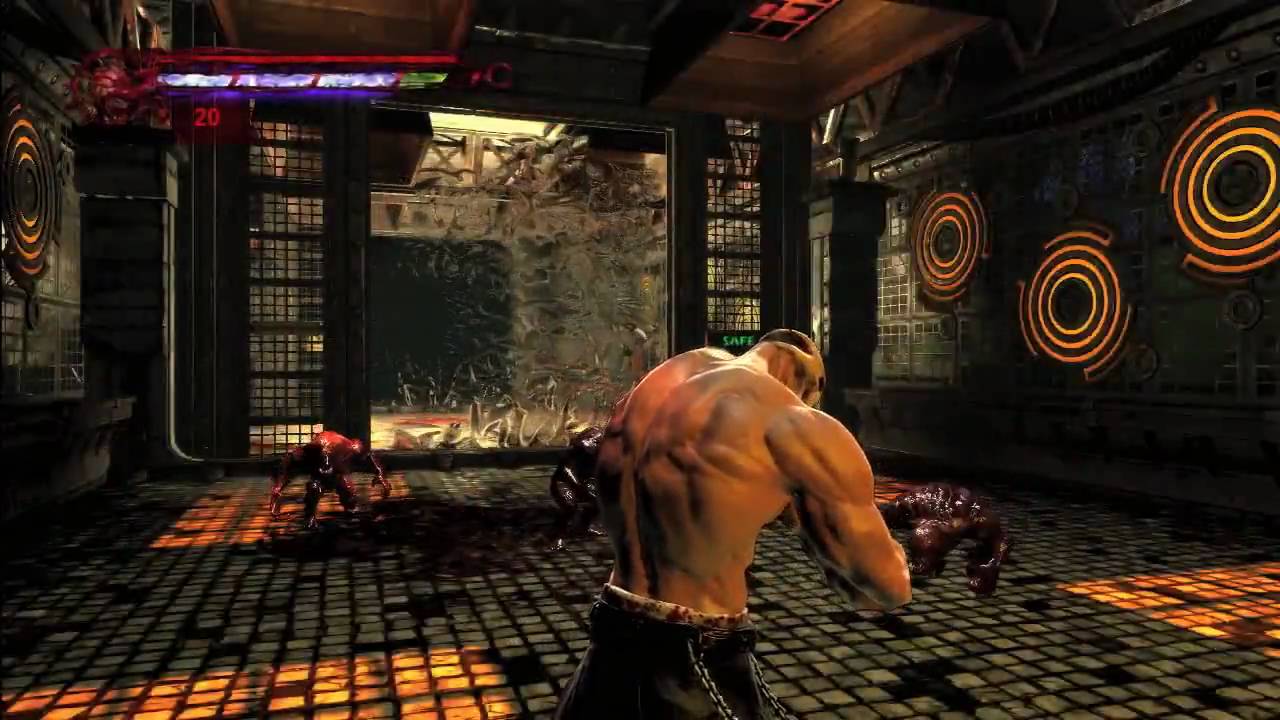
In light of the Splatterhouse, the game series has a reboot with the 2010 release for the newer console versions, Xbox 360 and Playstation 3. Some speculate that this game is a follow-up to Winpaku Graffiti.
Simple 2000 series vol 64 the splatter action is a Japanese-only Playstation 2 game that draws inspiration from games like Winpaku Graffiti. The same team did not create the game, but it was greatly influenced. Although it is not part of the Splatterhouse game series, it is a genuine hidden treasure for the system.
Splatterhouse was a game that I was looking forward to that had a legacy to stack up against and was being worked on by a crew of passionate creatives who found themselves in an inevitable situation. The House of splatter was built smack dab in the middle of the Renaissance of the 1980s. The other notable horror franchises include Freddy, who was trying to conquer the dream master.
Kane Hodder slipped on the hockey mask to bathe in some new blood, and a little buddy named Chucky started to carve up cinemas nationwide while horror video games were doing nothing cause they barely existed at the time outside of maybe some obscure home computer games, bad Atari adaptations and Castlevania was not precisely a booming genre.
Despite this, the battles changed when Namco unleashes Splatterhouse onto the arcade scene, much like Castlevania was an homage to universal monsters. Splatterhouse was a sendup of American Slasher and horror films.
It starts with Rick Taylor, who becomes possessed by the evil and vaguely sports-shaped terror mask and is tasked with saving his girlfriend, Jennifer, from the mad Dr. West. He would have to survive the many gore-laden hallways of the West mansion and fight as many movie references as possible, with the evil dead being one of the most obvious.
Notably, the game was a hit featuring taboo levels of violence and mayhem and received alone turbo graphics port. Two sequels were then released in the following years, both exclusive to the genesis with even a chippy-based spinoff and inexplicably making its way to the NES. Splatterhouse 3 splattered onto the beginning in 1993, making it the last entry of the series for 17 years.
That is until Namco resurrected the IP and gave it to the rise of exciting developers, Battle Rocket, but they fired Bottle Rocket after some time and then hired the Afro Samurai team to finish it. They formed a brand new group to help them.
According to the many fans of the series and critics, they released the Splatterhouse remake, a critical commercial failure. After that, they have not talked a single word about the franchise ever since. You would know the game looked grim if you followed Splatterhouse even casually from 2008 to 2010.
Namco could not contain all the explosions exploding off-screen from the general public, but it was until polygons took a deep dive into the hellish development of the game that a lot of new insight was gleaned. The game took a surface-level look at the dark clouds that swirled around the West mansion during that fateful period.
Surprisingly, the game’s development started in May of 2008 when the game was formally revealed to the public. Namco gleefully went all-in on the edgy, blood-soaked aesthetic, showing fantastic concept art and listing primal and gritty as a gameplay feature. This announcement also promised a 2009 release date, which is a thing that did not happen.
The thing that did happen in 2009 where reports that Namco had wrenched the development kits and all work done up until that point from Bottle Rocket and was shopping the project around elsewhere. To all of us at the time, this would seem like a big mean move, but it was Namco trying its best, not in an elegant way, to save the project.
Namco said that the only reason a project gets taken away from a developer is due to performance issues and plainly stated that Bottle Rocket was not meeting their requirements. Following that delays, primary development duties were then passed on to the Afro Samurai team working within Namco itself.
To any casual Splatterhouse freak out there, these were all ill omens for the reboot chances of success, and Splatterhouse, even today, never achieved the notoriety of its contemporaries like Castlevania, so it already had an uphill climb ahead of it. Interestingly, many projects that wander into this hazy purgatory-like state of development rarely see the light of day. Starcraft Ghost is a great example.
This new take on the franchise was just like Rick himself crawling through a pool of its blood to reach its goal. It was not until the end of 2010 that the game was finally released on November 22nd. Unfortunately, it missed the crucial spooky month of October, where Namco marketing representatives felt the game would have had its best chances to sell the most copies it did not sell. The Splatterhouse game already had a stinky stigma, and the critics took that to heart.
It got roasted in reviews, and many fingers were pointed in different directions. The critics have criticized the Splatterhouse revival for its flaws, audio glitches, and repetitive gameplay. Lots of people blame Namco for the last-minute developer switch.
The Afro Samurai team, whose last game was mid at best, also took a shellacking. Of course, Splatterhouse was the game that killed Bottle Rocket which officially closed its doors to the gaming industry well before the game even came out as they were never able to secure a deal with any other publisher.
Namco’s Makoto Iwai was in charge of bringing back Splatterhouse and making it into a big juicy, bloody rare steak for gamers to consume and, more specifically, western ones. The mandate was to create a heavy metal-infused violent affair as that was the style at the time in the fueled age of Xbox 360 and Playstation 3.
The franchise was already known for pushing the envelope in the late 80s and early 90s. Still, it was also a difficult time for game development, so Namco needed to find a competent but not overly expensive studio to bring Splatterhouse to life.
Battle Rocket entered the scene and was chosen from the team’s goodwill and garnered from its previous work with Sony. Namco’s design parameters for the reboot were not complicated. It was a gritty art style, buckets of blood, and remained faithful to the original games by making it a simple brawler that anyone could pick up and play that, however, was not precisely what Bottle Rocket was making.
Jonathan Beard was the intermediary between Namco and other leads on the development team and promptly ignored all of their demands. He decided that the game needed more Rise of the Kasai and started implementing the targeting system from that game into the Splatterhouse game despite Namco wanting none of it.
Character design was also a point of contention instead of just simple ghouls and zombies. The art team had been directed to start exploring alternative ideas that maybe strayed too far from what Namco was expecting.
Every time producers from the publisher would visit Bottlerocket. Jonathan Beard would show them anything from the game lying around that would fit what they were expecting. When the publishers leave, he would tell the team to continue with the stuff he was expecting. However, when milestone builds were sent to Namco, there would be no hiding what the game was turning into.
This was Battlerocket’s first HD game, and development was going well on the Xbox 360 version in terms of performance. The Playstation 3 was lagging mainly because of the chosen engine, which was gamebryo. Bottle Rockets were not equipped to deal with the headaches that would present. Namco got increasingly nervous with the lack of progress in almost every game area, and Jonathan Beard was still ignoring a lot of their mandates.
Bottlerocket took on another project for a completely different publisher during all of this. This infamous money laundering scheme Brash Entertainment has a long rap sheet of screen over many decent development houses. They had Bottlerocket working on an adaptation of DC’s flash and were trying to make it into a substantial open-world action game.
Still, like all of their projects under its umbrella, everything came crashing down when the sleazy publishers suddenly went bankrupt. They could no longer pay the multiple developers under contract, and the flash game was canceled before the public even knew it existed.
All things considered, the pressure was on for Battlerocket to deliver with Splatterhouse, which was going bad. With every new milestone build, Namco kept seeing a lot of its feedback and directions still not making it into the game they were paying for, and by early 2009 the decision was made to try and salvage something. Jonathan Beard and Namco have seen eye to eye, and their last remaining game is no longer in the studio.
Bottlerocket closed six months later. Namco, however, realized the talent on the development team and personally contacted several vital members. Jonathan Beard oddly did not being one of them and offered the chance to finish building the Splatterhouse game and even set up another office for them to do so. The new office was located in Carlsbad, California.
It consists of about 20 times more employees than Bottlerocket’s original group, who had split the work with the Afro Samurai team in Santa Clara, California. The long-distance for a whole year between both teams was maintained, but it was always under constant strain—one of the main reasons they almost had to start again from scratch.
All the time, Jonathan Beard was in charge. Bottlerocket never got the game to anywhere near complete. Some unconnected maps were created, and you could make Rick move, but that was it. It was still missing a lot of variety of features and effects and just was not fun.
That year an additional development time was a constant state of crunch as Namco could pull the plug if anything went wrong. Still, fortunately, through a lot of time and hard work, both teams were able to pull it off and got the game to a playable finish state in late October of 2010.
Not surprisingly, the game wound up feeling unpolished to many fans. Lots of bugs and controls plagued the platforming and side-scrolling sections. Additionally, the first few hours of the game were some of its roughest as the team ran out of time to balance things further and to convey to the player how everything worked properly. This, as you can guess, makes for a wrong first impression.
Still, as the game goes on, you can see a lot of love and passion poured into the surprisingly fleshed-out story, featuring lots of extras and has loads of imaginative level designs, and some pretty fun boss fights.
It’s a miracle the Splatterhouse game wound up being as good as it is. Unfortunately, even with all that work and crunch to try to save the whole franchise, the critical reception for the game was not good and did not equate to solid sales either. The studio behind the game was also closed because it was always meant to be a temporary thing to finish the game and everyone went their separate ways.
In my opinion, the game looks incredible. Still, it also contains a plot that matches and sometimes exceeds that of the original game, ridiculous references to previous games, and a metal soundtrack. It also includes the originals in all the horrific glory games for free and uncensored, but even without those old games, the game still accomplishes more things right than wrong.
In addition to this, the game features excellent voice acting, mostly thanks to Jim Cummings’ contributions, and animated scenes throughout; luckily, the game is also rather enjoyable. It’s in the same spirit as games like Devil May Cry or God of War, even if it doesn’t play entirely as well as those titles. Let’s be honest: those titles are incredible, and this is merely a decent game.
Compared to the originals, the game’s plot is more comprehensive and even resolves age-old mysteries such as the origin of the terror mask. Who is Dr. West?. If you are not battling bad guys, the horror mask is always talking to you, and vice versa.
At times, they even overlap, helping to break up the repetitious gameplay that the critics seem to despise. Some areas of the game become fully 2D. However, these parts can often be to the game’s disadvantage.
While some may appreciate a significant style change, they’re just not as excellent as the originals. If you’re a fan of the Splatterhouse series, which we presume you are because you’ve read this far, you can decide whether this game is worth your time.
Splatterhouse – Goriest Game Ever
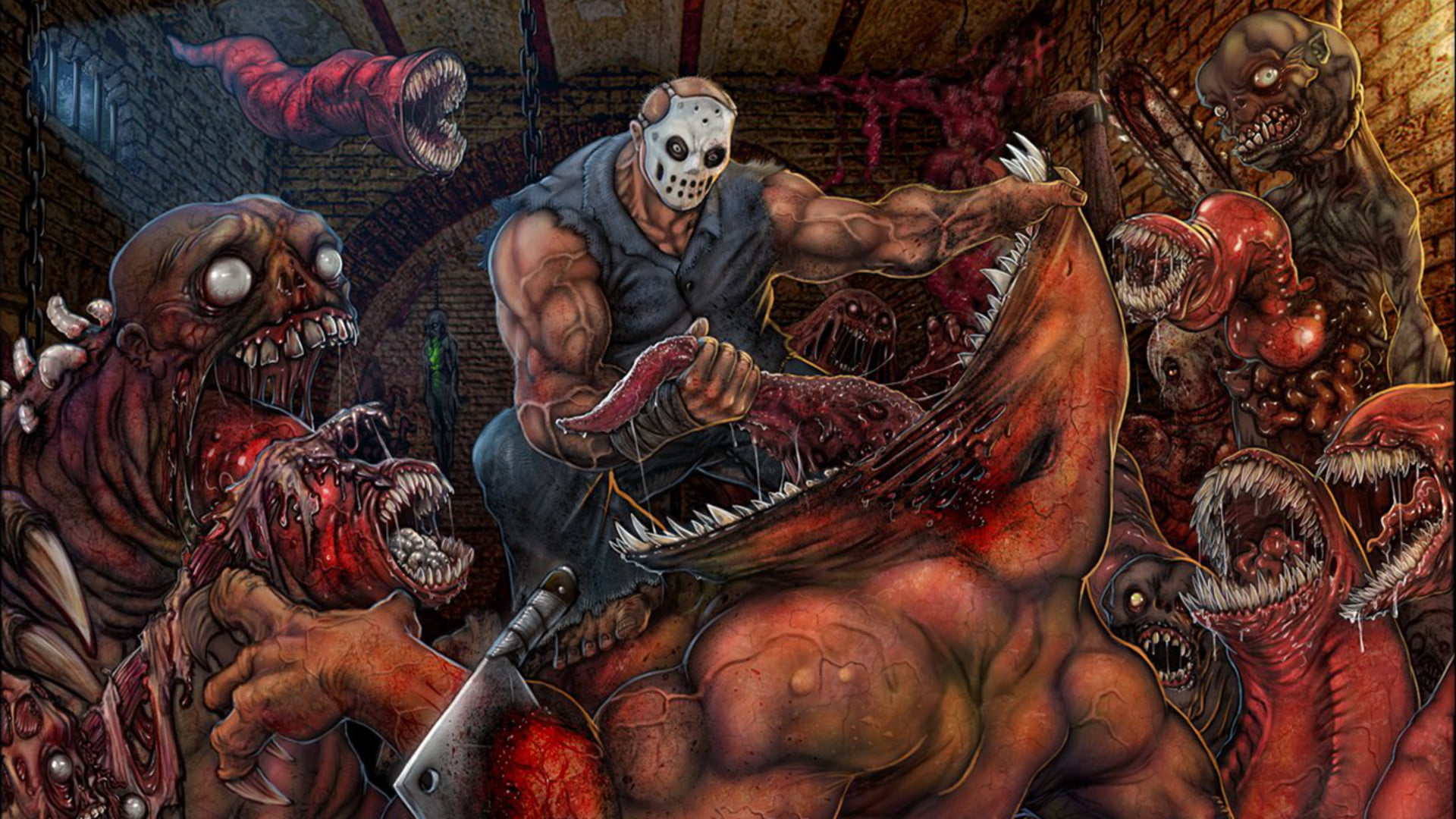
Splatterhouse is the goriest game you would have ever played. When you name it Splatterhouse, I would be disappointed with anything less. The game is written by comic writer Gordon Rennie, known for Judge Dredd Negron odds, Predator Nemesis, Sewer Control, and tons of other comics.
The story starts with a pair of college kids entering a Spooky mansion for reasons to be determined later, and there soon treated by a mad scientist Dr. Henry West and a horde of monsters. Rick is impaled while the evil Dr. West kidnaps his girlfriend. Rick’s lifeless body falls into a coffin and unleashes an ancient evil known as the terror mask.
Putting on the mask is the last-ditch effort to save his life. Rick attains the power in his new body and becomes a titan of pure punching power. Thus, we begin a ride of punching, which graduates to stabbing, then to smashing, and we end with shooting. All this is to save Rick’s girlfriend, Jennifer. Rick and the terror mask are both interesting characters.
Moreover, the mask is a mischievous demon that thrives on blood and chaos. He makes inappropriate jokes, says poetic things about mass murder, and Lovecraftian horror is rising from the abyss and breaking the fourth wall. This character could not be more perfect if they tried to top it all. He is voiced by Jim Cummings, also known as Winnie the Pooh and Darkwing Duck.
Rick is a kind-hearted geek who would not hurt a fly, but he is pushed into this crazy journey in which he becomes blood fuelled maniac that murders demons and hordes of the undead by the planet load. The terror mask is having a good time, but our relatable hero Rick just wants to go home. The two halves of our player character make this game so much better than if he was just silent the whole time. The back and forth is always exciting, and the game cover themes like atoning for one sin and the ethics of killing to save another.
Many implications are made about the origins of the antagonist throughout, and you have to collect all these audio logs to get a complete picture of what is going on. We also need to take note of the heavy metal soundtrack by Five Finger Death Punch Mastadon Lamb of God and the Plasmas. It is a pretty standard character action game or spectacle fighter for you. Still, it keeps itself from getting boring by mixing it up often.
Every level has something new for example, you can’t pass a particular area unless you kill all the enemies in a specific way, or you cannot slow down to fight because the ceiling keeps caving in. The ground keeps opening up, and giant spinning fan blades are designed for grinding up bodies, and you have to stay clear of it. The varying environments and enemy patterns keep it from feeling repetitive.
Rick can do fatalities. Some may call it finishing moves if it will help you sleep at night. The entire screen goes dark, and you have to follow specific inputs to complete enemies in bloody ways. There are a lot of these animations across the game depending on enemy types, but they do raise the question of whether Rick is that same.
To begin with, given these circumstances, I could see an average person tearing a monster’s head off with their newfound superpowers but ripping its head in half and pulling out its lungs, and slamming them into the ground that is a bit much still within the realm of the reason though.
You can also pick up weapons, including Wooden board, lead pipe, machete, and many more. The only thing Joel did not pick up was a chainsaw, and this game makes them exactly as powerful as you want them to be. You hit someone with a pipe, and they go flying. You slice someone in half with a meat cleaver they turn into bits after one hit.
The power in the weapons makes you want to think strategically about how you will use them going into a fight because there is weapon degradation. So you’ll start hacking up the most formidable enemy in a room with the blade, dispose of it in a spectacularly violent fashion and then use your most muscular power on all the goons left behind.
Rick is powered by monster blood. You have wolverine-style healing powers activated by consuming blood, so you will find yourself trying to find enormous puddles of it in combat. You can also actively drain blood from enemies by pressing a trigger button and hammering a circle or B.
This stops all the enemies and tracks them long enough for you to fully heal yourself at the cost of one bar of your meter. If you keep butchering bad guys, your meter fills up. After that terror, the mask takes over, and Rick becomes even more badass as he cuts enemies to ribbons.
Indeed, the bosses are fantastic the favorite one among them mine would be the first one which is this doll that can telekinetically move objects around itself to create a suit of armor out of pieces of scenery from the house. This fight involves you ripping this huge enemy apart in whatever way you can. It’s one of the game’s highlights alongside the chainsaw-wielding demon that teleports when the lights are off.
Subsequently, the game often pays respect to its arcade roots with side-scrolling sections that amazingly do not kill the game’s flow. These are pretty cool and more interesting than just walking down a straight hallway the way you usually would. The Splatterhouse game does a lot of cool tricks with the three-dimensional perspective.
I am sure if someone was a fan of those old arcade games, you might be impressed with all the changes or disappointed that it just isn’t the same well, fear not, this game contains all ports of all the original games that led up to this one. If you want to take a fun nostalgic trip, you could do that.
There are these segments when they want you to do some uncharted style climbing sequences, and the system for doing them is very clunky and almost always takes multiple tries. Failing them is annoying because the checkpoints are sort of unforgiving and while this game is not too hard, dying a few times from something cheap is inevitable.
Something that is not a flaw but maybe definitely a turn-off for some of you is that this game is challenging towards the end. Enemies used as bosses in the earlier levels return just as average enemy types, and it can start to feel a little overwhelming when you have so many giant monsters to fight at once.
When you touch them, these enemies damage you, but there are no weapons in the room, and two bosses simultaneously say your health is just worded down. It’s not impossible, but damn, is it a challenge?
If you are one of those Dark Souls masochists, I highly recommend you crank this Splatterhouse game to the hardest difficulty and give it a shot. The game takes you to a lot of locations across time and space. The early levels have an awesome haunted house vibe. The latter ones give you this glimpse into the creepiest post-apocalypse and a horror-themed amusement park, and some looks into a cracked version of reality.
I would not spoil the details because I want you to play this game yourself, but the ending begs for a sequel that sadly never got made. As above mentioned, the entire development team was laid off from Namco Bandai shortly after the game’s release, and this one flew pretty far from under the radar for the gaming world, further ruining this game’s chances at a follow for so many people have not heard of this game, and that’s a tragedy. I would say this game is an underrated gem of the action genre, and if this sort of thing is your cup of tea, go pick up a copy and check it out.
Origin of The Terror Mask
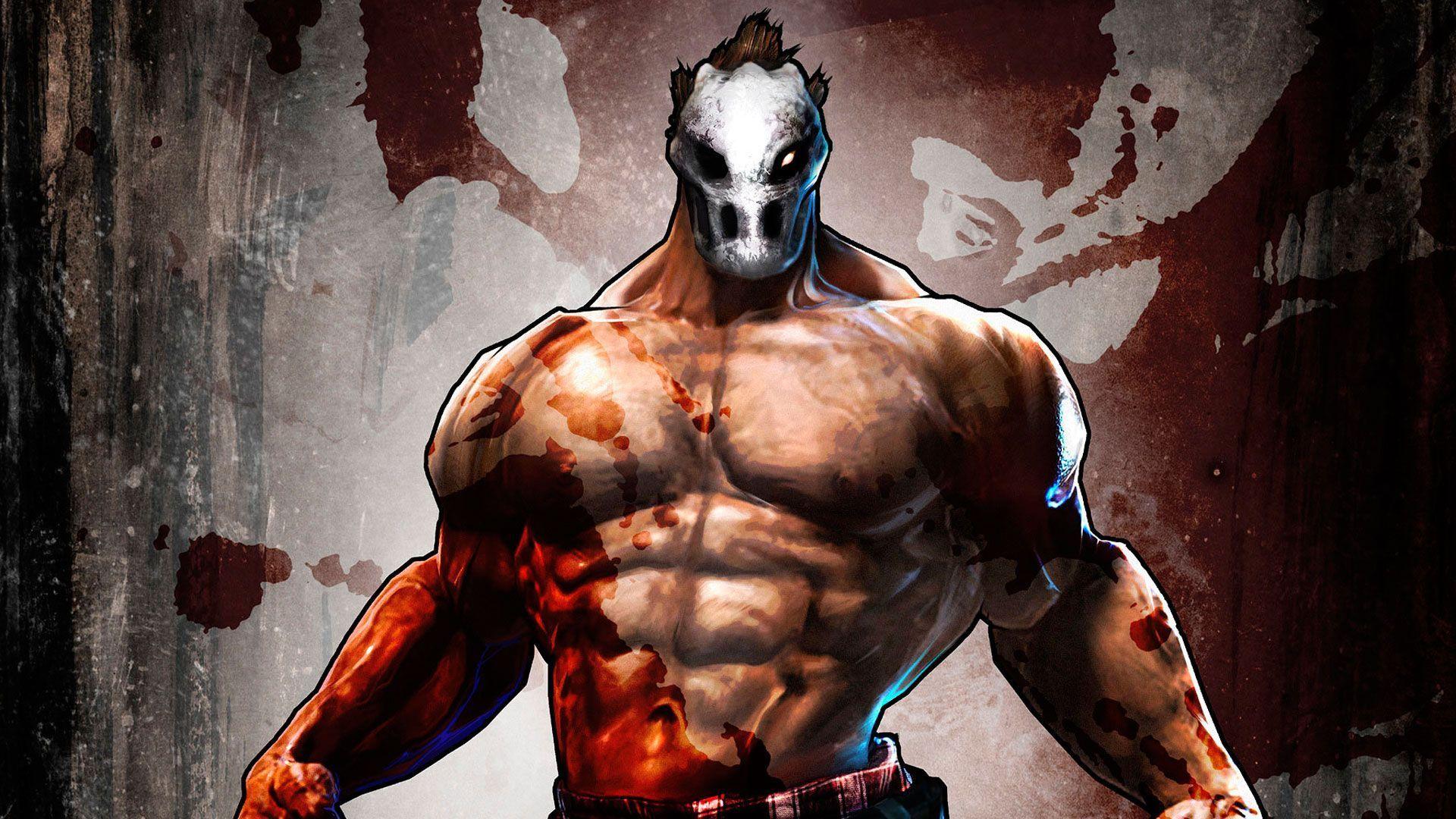
The terror mask in Splatterhouse, also known as the Hell mask, is an ancient relic of tremendous power, but It Only grants this power when bonded with a host. Furthermore, the mask would attach itself to the host and transforms them into a gigantic monster of destruction filled with a sense of doom fueled by revenge, hate, and anger. In addition, a massive warrior is given, which makes it almost impossible to stop.
An immortal being from another dimension inhabits the mask itself. It also displayed telekinetic powers. Rick Taylor was the name of the host who donned the mask. It would speak up to him telepathically, guiding him throughout his journey. The mask would often aid Rick in his battles, but his proper attentions remained hidden from the host.
Terror masks would fool the host in many ways through lies, manipulation, and trickery. This was just a further step in completing its ambitions. The entity within the mask was planning to take over this dimension. In addition, the spirit within the mask could also transfer to another host as it did with the evil’s one body in Splatterhouse 3.
According to the journals of Dr. Henry West, he mentions in it that he acquired the terror mask from an Aztec coffin. It was attached to the withered body of a previous host from a long time ago when he failed to unlock the secrets within.
A terror mask is just a ceremonial bone mask. The entity within the mask never revealed itself to Dr. Henry West, but it does speak to Rick when he is badly injured in trying to save his girlfriend, Jennifer, from Dr. West’s mansion.
Rick puts the mask on, transforming him into a hulking beast. In addition to this, the Terror mask also transforms him into a berserk form that is even stronger, equipped with faster regeneration, more agility, and massive bone blades from its forearms. It is believed that the entity within the mask controls this form because once you activate it, you see through the black and white vision of the mask.
On the other hand, the terror mask was a slave to a corrupted group, described as an alien species. They come from a realm known as the abyss, the home, and the prison of the corrupted. It is depicted as the land of the dead. The corrupted had enslaved the torn mask for eternity.
When war broke out, it escaped through a tear in the fabric of the universe. This entity got revenge by slaying a member of the corrupted when it was summoned during a ritual of the five eclipses.
After this event, the corrupt denied any entity escaping their control. They lied when they believed nobody would oppose them since the terror mask spent so much time in the abyss and learning about the corrupt.
It describes them in this way “they are everything and nothing the many angled ones unknowable timeless eternal. They inhabit the abyss, the gulf between one said, and what’s understood, that place from whence stems all human suffering humanity can only trace their jagged silhouette around the shadow they cast across the world. Their famine conflict is genocide. They are now and forever, Amen, and they are coming your way.”
While the Splatterhouse game in 2010 had many easter eggs related to the franchise, one of my favorites is that the Splatterhouse 2 box art in North America and Europe had a monster similar to an adult Xenomorph. At some point, the mask’s design was altered because it looked too similar to the mask of Jason Vorhees from Friday the 13th.
Conclusion
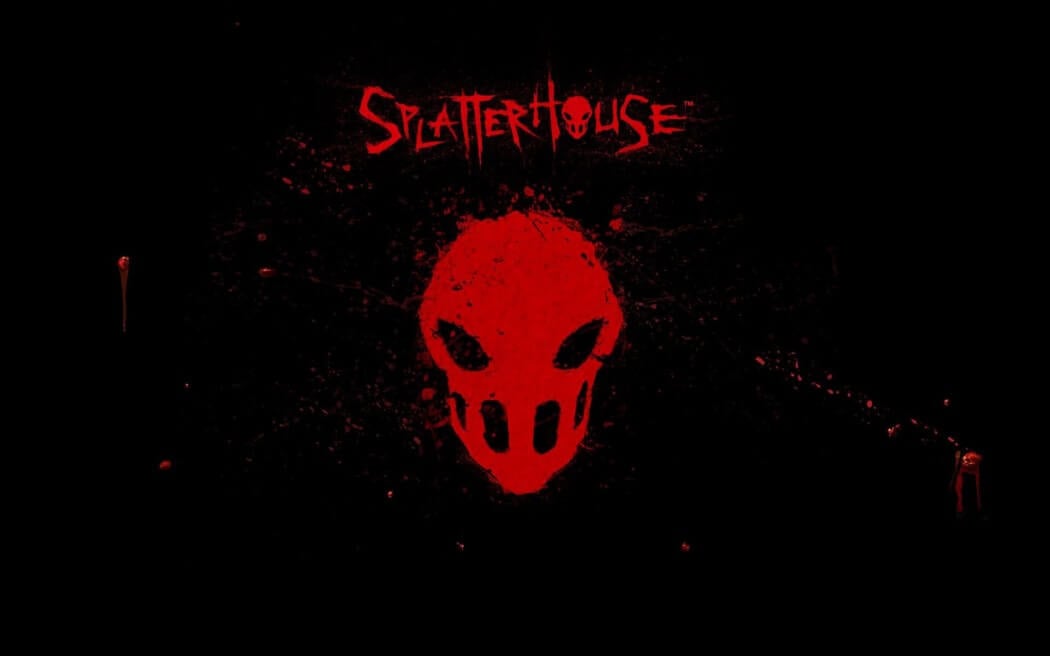
There you have it, five games of Splatterhouse. Overall, regardless of the classic Splatterhouse game, you get a chance to play. They all provide good value for money. Splatterhouse was unique at the time, and as a result, the game continues to stand out now.
The inventors took a chance, and it paid off, as one of the most iconic arcade games of the 1980s emerged. From the game’s visuals and environment to its incredible mood and compelling storyline, Splatterhouse is a unique experience that paved the way for many more horror-themed games in the future. Kazumi Mizuno was correct in his assessment that there was a demand for fun with this sort of storytelling, and all you have to do now is look around you to see that.

